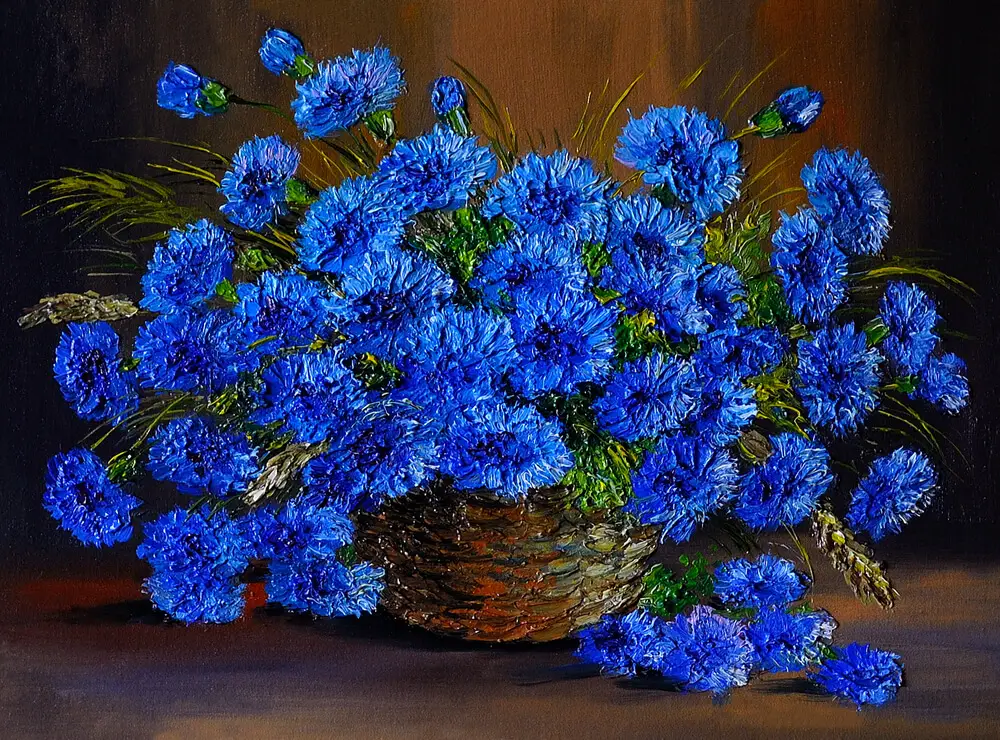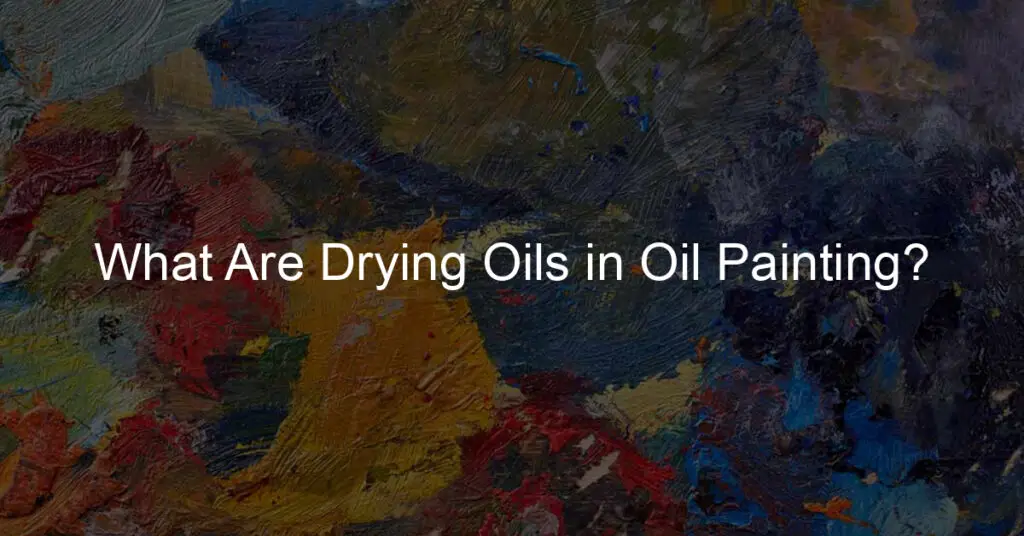Drying oils are an essential component in the world of oil painting, as they determine the rate at which the paint dries, the overall texture of the finished work, and the longevity of the artwork. They are used to mix with pigments, creating oil paints that can be applied to various surfaces, such as canvas, wood, or paper. Gaining a deeper understanding of drying oils will help artists make informed decisions about the materials they use, ensuring that their paintings display the desired properties and stand the test of time.
Among the most commonly used drying oils are linseed oil, walnut oil, and poppy seed oil. Each of these oils possesses unique properties that can influence the final appearance of a painting, such as drying time, glossiness, and color stability. By carefully selecting the appropriate drying oil for their work, artists can achieve a vast range of effects, from delicate, translucent layers to robust, voluminous brushstrokes. As a result, these oils play a key role in the artistic process, allowing painters to exercise control over their medium and fully express their creative vision.
Types of Drying Oils
Linseed Oil
Linseed oil, also called flaxseed oil, is one of the most commonly used drying oils in oil painting. It comes in two varieties: cold-pressed and refined. Cold-pressed linseed oil is considered superior due to its better color and drying properties. Refined linseed oil goes through a purification process that removes impurities, improving its clarity. Linseed oil dries by oxidation, which makes it ideal for creating a strong, flexible paint film. It’s often used in the initial layers of a painting called the underpainting. However, it has the slowest drying time among all drying oils.
Poppy Oil
Poppy oil, derived from the seeds of the poppy plant, is another popular drying oil used in oil painting. Compared to linseed oil, poppy oil dries more slowly, which can be beneficial for artists who want more time to work with their paint. It is characterized by its pale color and consistency, which doesn’t darken or yellow over time as much as linseed oil. This makes poppy oil more suitable for painting lighter colors and highlights.
Safflower Oil
Safflower oil is extracted from the seeds of the safflower plant and serves as an alternative to linseed oil. Its clear, pale color makes it less prone to yellowing with age compared to linseed oil. Safflower oil dries more uniformly than linseed oil but has a slower drying rate. It’s an excellent choice for artists who work with transparent or light-colored pigments and require a longer open time for their paint.
Walnut Oil
Walnut oil is a versatile drying oil obtained from the nuts of the walnut tree. It has several advantages over linseed oil, such as a clearer color, faster drying time, and more uniform drying characteristics. It’s less likely to yellow over time, making it suitable for painting lighter hues and preserving their original color. Additionally, walnut oil’s unique properties impart a smooth, silky texture to the paint, enhancing its flow and brush ability.

Properties of Drying Oils
Drying Time
Drying oils, used as binders in oil painting, play a crucial role in determining the drying time of the paint. Factors influencing drying time include pigments, depth of application, and the specific oil used. Fatty acid composition affects the oxidation process, with linolenic acid drying quicker than linoleic acid, which in turn dries faster than oleic acid. Some pigments have a catalytic effect on drying; for instance, lead-based pigments like raw sienna speed up the process. Similarly, iron-based pigments slow drying time, evident in colors like sap green.
Gloss
Gloss in drying oils can enhance the paint’s vibrancy and visual appeal. Differing drying oil formulations produce varying gloss levels. For example, the addition of resins to the oil can increase the glossiness of the final product. However, it is important to note that an excessive gloss can cause the work to appear superficial.
Transparency
Drying oils influence the transparency of oil paints, allowing artists to create depth and texture in their work. The oil’s refractive index plays a role in determining transparency; a lower refractive index results in greater transparency. By choosing different drying oils and combining them with appropriate pigments, artists can achieve various levels of transparency in their artwork.
Yellowing
Over time, drying oils can undergo yellowing, which alters the appearance of the paint film. Yellowing is primarily attributed to the chemical changes in fatty acids, such as oleic, linoleic, and linolenic acids, during oxidation. Oxidation leads to the formation of hydroperoxides, which can discolor the paint film. Specific pigments and additives, like wax, can help minimize yellowing in oil paints.
Flexibility
The flexibility of drying oils is essential in preventing cracks and ensuring the paint film remains intact. The oil’s flexibility depends on factors such as fatty acid composition and impurity levels. For example, glycerol and waxes in the oil can affect its ability to withstand mechanical strain. The combination of specific drying oils and pigments can provide the desired flexibility level, ensuring the longevity of the artwork.
Technology
Technological advancements have led to modifications in drying oil formulations to improve their properties. These developments include the use of additives and catalysts that enhance drying times, gloss levels, transparency, yellowing resistance, and flexibility. These enhancements provide artists with a broader range of drying oils to suit their specific needs and preferences, fostering creativity and expanding possibilities in oil painting.

Oils in Oil Painting
Oil Paints
Oil paints are a blend of pigments and drying oils, such as linseed oil, poppy oil, safflower oil, or walnut oil. These oils serve as binders, helping the pigments adhere to the canvas and providing a flexible, durable paint film. The drying process involves oxidation, allowing the paint to harden over time.
Materials
In oil painting, various materials can be combined with drying oils to create desired effects and facilitate the painting process. Examples of these materials include:
- Solvents: Like paint thinner, solvents are used to dilute the oil paint, making it easier to apply and modify.
- Driers: Cobalt and manganese are often used as driers to accelerate the drying process of the oil paint.
- Stand oil: A thickened form of linseed oil that increases fluidity and gloss.
Mediums
Mediums are substances added to oil paints to alter their properties, such as texture, drying time, and sheen. Some common mediums include:
- Linseed oil: The most popular drying oil. It has a medium drying rate, providing good flexibility and a clear finish.
- Poppy oil: A slower drying oil known for its non-yellowing properties and its suitability for pale colors.
- Safflower oil: Similar to poppy oil but with a slightly faster drying time.
- Walnut oil: A non-yellowing drying oil with a slower drying time, often used as an alternative to linseed oil.
Layers
Layering plays a vital role in achieving depth, detail, and texture in oil paintings. Each layer must be applied with consideration for the drying time and flexibility of the materials used. Following the principle of fat-over-lean, the use of fast-drying and lean layers (low oil content) should be applied first, while slower-drying and fat layers (high oil content) should be applied later to prevent cracking.
Varnishes
Varnishes are a crucial final step in oil painting. They protect the paint films from dust, dirt, and environmental factors, ensuring the longevity of the artwork. Acrylic or watercolor coatings are typically used as varnishes. Care must be taken to ensure that the oil paint has thoroughly dried before applying the varnish, as this may lead to future complications such as discoloration or peeling.

How Different Oils Affect Paint
Drying Rates
Drying rates play a crucial role in oil painting. Different oils can cause paints to dry at varying speeds. Generally, alkyds are popular as they speed up the drying process. Some common oils and their drying rates include:
- Alkyd: Fast drying
- Linseed: Moderate drying
- Safflower: Slow drying
Different pigments can also affect the drying rate. For example, Ivory Black and Titanium white dry slower than Burnt Sienna and Prussian Blue. To increase drying time, artists may use additives like cobalt and manganese driers.
Color Impact
Oils can influence the vibrancy, clarity, and stability of colors. For example, safflower oil is known for producing less yellowing, preserving the brightness and intensity of pigments. In contrast, linseed oil can sometimes cause colors to yellow more over time.
When it comes to specific colors, some pigments require specific types of oil:
- Titanium White: Linseed oil, prone to yellowing
- Zinc White: Safflower oil, less yellowing
- Ivory Black: Linseed or alkyd, faster drying
- Lamp Black: Linseed oil, slower drying
- Burnt Sienna: Safflower oil, clearer and stable
It’s crucial for artists to know how different oils interact with pigments, especially in terms of their drying rates and color impact, for achieving a desired effect.
Additionally, oils can affect the gloss and stability of finished painting. Varnish layers may be used to enhance the glossiness and protect the painting. However, too much varnish or incorrect application can increase the chances of cracking and other chronic issues. Using proper oils and techniques will ensure a vibrant, stable, and long-lasting artwork.
Popular Oil Painting Pigments
Frequently Used Pigments
In the world of oil painting, certain pigments are more commonly used due to their properties and availability. Some popular pigments include:
- Titanium White: This is a versatile, opaque pigment that is great for mixing colors and providing brightness in a painting.
- Cadmium Yellow: A vibrant, warm yellow pigment that has strong tinting strength and excellent lightfastness.
- Cadmium Red: A rich, warm red pigment valued for its opacity, lightfastness, and color intensity.
- Ultramarine Blue: This deep, intense blue pigment is valued for its ability to mix well with other colors, creating various shades of blue and other tones.
Pigments and Mixtures
To create various shades and mixes, artists often combine pigments with solvents and additives, such as paint thinner, which provides flexibility in texture and drying time. Here are some examples:
- Fast drying mixtures: By adding solvents like acrylic or watercolor to oil pigments, artists can create fast drying paints. These mixtures allow for thinner films and quicker drying times, which can be useful for layering techniques or when time is of the essence.
- Slow drying mixtures: Some artists prefer a slower drying pigment mixture that allows for more blending and manipulation of colors. This can be achieved by combining pigments with specific oils or additives that decrease the drying time.
- Custom pigment mixtures: Artists may also create their own unique pigment mixtures by combining different pigments and solvents. This allows them to achieve a specific hue or consistency they desire for their artwork.
By understanding the properties and combinations of various pigments, artists can find the right materials to suit their needs and style in oil painting. Adjusting the mixture by adding solvents or additives can further enhance the color and effects on the canvas.

Alternatives and Additives
Alkyd Resins
Alkyd resins are synthetic mediums that can speed up the drying process in oil painting while retaining gloss and durability. They are made from the reaction of oil, usually derived from safflower or linseed, with a synthetic resin component. Alkyds can be combined with traditional paint films and are often used as a varnish, providing a consistent surface and appearance. Some artists prefer alkyd due to the faster drying time and increased gloss compared to traditional oils.
Driers
In oil painting, driers are substances that can accelerate the drying process by promoting autoxidation of unsaturated fatty acids in the oil. The most common driers are metal salts, such as cobalt and manganese. They can be added in small amounts to the paint to decrease drying time without causing any significant change to the paint’s properties. However, it is essential to exercise caution when using driers, as excessive use can lead to weakened paint films or embrittlement.
Watercolor Paints
Watercolor paints are an alternative to traditional oil painting methods, employing water as a thinning agent instead of oils or solvents. These paints consist of pigments and a binder, usually gum arabic or synthetic mediums such as acrylic. Watercolor paints offer advantages such as ease of cleanup and faster drying times, making them popular among artists. However, they possess a different consistency and working method than oils, requiring adaptation for artists more accustomed to oil painting techniques.
Turpentine
Turpentine is a traditional solvent used in oil painting to thin the paint and clean brushes. Made from the distillation of tree resin, it assists in the paint’s smooth application and aids in breaking down fatty acids for faster drying. Alternatively, artists may opt for odorless mineral spirits as a less pungent, but equally effective, option for diluting paint and cleaning brushes. It is essential to handle both turpentine and mineral spirits carefully, as they can be hazardous in concentrated forms.
By considering alternatives like alkyd resins, driers, watercolor paints, and solvents such as turpentine, artists have various options to optimize their oil painting experience based on preference, technical requirements, and specific creative goals.
Frequently Asked Questions
What are some common examples of drying oils used in painting?
Drying oils are a key component in oil painting and include linseed oil, walnut oil, and poppy seed oil. These oils oxidize when exposed to air, forming a solid film that binds pigment particles in the paint.
How do drying oils differ from non-drying oils in their application?
Drying oils, as mentioned earlier, oxidize and form a stable, solid film, making them suitable for oil painting. Non-drying oils like mineral oil and vegetable oils remain liquid and do not undergo the same chemical reaction. As a result, they are not suitable for use in oil painting because they will not form a stable, long-lasting film.
Why are drying oils preferred in oil painting?
Drying oils are preferred in oil painting due to their unique ability to form a solid and durable film when exposed to air. This film is essential in providing a stable surface that binds the pigments and allows the paint to be worked on and built up in layers, creating depth and texture.
What is the role of stand oil and Liquin in oil painting?
Stand oil is a thickened, slow-drying form of linseed oil which is often used to increase paint consistency, transparency, and gloss. It also helps in leveling and reducing brush strokes. Liquin, on the other hand, is an alkyd resin-based medium that speeds up drying time and enhances paint flow. It is commonly used for glazing, blending, or creating thin layers of paint.
How do M Graham Walnut Oil Medium and Walnut oil affect the drying process?
M Graham Walnut Oil Medium and Walnut oil reportedly dry slightly slower than linseed oil, providing artists with an extended working time. This allows more time for blending and layering of colors. They are also less yellowing over time, providing a more stable color environment.
Can one use semi-drying oils in oil painting?
Semi-drying oils, like safflower oil and sunflower oil, can be used in oil painting as they do dry and form a film. However, their drying rate is slower compared to drying oils like linseed oil. This may affect the overall drying time and paint handling properties. It is essential to consider how these oils may affect the final artwork and follow the “fat over lean” principle to ensure proper adhesion and paint stability.


















